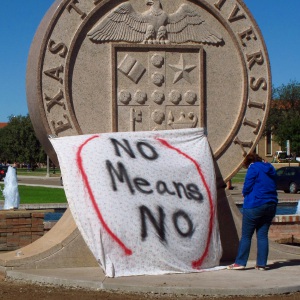Jonathan P. Baird: Early on, journalist Dorothy Thompson saw Hitler for what he was
| Published: 08-15-2019 7:00 AM |
In studying the history of Italian and German fascism in the 1930s, it is fair to say that the world was not adequately warned about the danger. To a shocking extent, the American press of that era whitewashed and minimized the fascist threat. This was true with both Benito Mussolini and Adolf Hitler.
Mussolini became Italian prime minister in 1922. After his infamous march on Rome leading 30,000 Italian fascist blackshirts, he forced the resignation of the liberal government. He quickly consolidated power and in 1925 declared himself supreme leader for life. Nevertheless, in the United States Mussolini got remarkably favorable press coverage for years after that.
The New York Times credited Mussolini with returning Italy to “normalcy.” In the aftermath of the Bolshevik revolution, many American papers worried more about the advance of the left than they did about the fascists. In 1928, the Saturday Evening Post serialized Mussolini’s autobiography. The largely favorable press coverage happened while Mussolini’s secret police jailed and eliminated his opposition and at the same time created a one-party dictatorship.
Similarly, the American press largely treated Hitler with kid gloves. The press saw him as volatile and a bit of a buffoon, but his dark side was obscured until it was too late. His incremental steps toward totalitarianism were buried in the news. Hitler shut down the newspapers of his political opponents on the left, arrested editors and sent them to concentration camps.
The American press poorly covered anti-Semitism and the increasing danger to Jews. This was true even though Hitler had been very on record with his hatred.
While as a general rule the American press failed to alert the public to the danger represented by the European fascists, there were notable exceptions. For many years, the journalist Dorothy Thompson ran a one-woman campaign against Hitler and the Nazis. Her heroic story deserves to be much more widely known.
Thompson was bureau chief for the Philadelphia Public Ledger and she wrote for the New York Evening Post. She had moved to Europe in the 1920s and become fluent in German. In 1931, she managed to wrangle an interview with Hitler.
The interview became the basis for her 1932 book I Saw Hitler! The interview first ran in the March 1932 issue of Cosmopolitan, then a serious magazine. Initially, Thompson wrote: “He is formless, almost faceless, a man whose countenance is a caricature, a man whose framework seems cartilaginous, without bones. He is inconsequent and voluble, ill-poised, insecure. He is the very prototype of the Little Man.”
Article continues after...
Yesterday's Most Read Articles
 New Concord apartments open in former First Congregational Church
New Concord apartments open in former First Congregational Church
 Georgia’s Northside in Concord transitions into catering and cooking classes
Georgia’s Northside in Concord transitions into catering and cooking classes
 ‘Bittersweet’: The Post on Main Street closes Friday
‘Bittersweet’: The Post on Main Street closes Friday
 Inside EFAs: How school vouchers have fueled an enrollment boom at Christian schools across New Hampshire
Inside EFAs: How school vouchers have fueled an enrollment boom at Christian schools across New Hampshire
 Messy parking around Concord’s bus terminal won’t get less messy any time soon
Messy parking around Concord’s bus terminal won’t get less messy any time soon
 Stefany Shaheen, daughter of New Hampshire senator, launches House bid
Stefany Shaheen, daughter of New Hampshire senator, launches House bid
Thompson dismissed Hitler although he admitted to her that he intended to create a dictatorship. After their interview, Hitler crushed his opposition, disappeared many and further advanced his persecution of the Jews. Thompson had to reassess. She realized she had seriously underestimated Hitler and the Nazi movement.
By March 1933, Thompson started writing a string of anti-Hitler articles. Her writing did not escape notice of the Nazis. In the summer of 1934, she was the first foreign correspondent expelled from Nazi Germany. The Nazis put journalists on notice that they would tolerate no criticism of Hitler.
When she returned to the United States, the New York Herald Tribune hired her. Her column “On The Record” was syndicated and it ran in 170 papers around the country. She also wrote a monthly column for Ladies Home Journal, and she appeared often on NBC radio. Her expulsion from Germany made her famous and led to her becoming a big media celebrity.
Thompson became a leading voice against fascism, regularly denouncing Hitler and the Nazis. She also demanded that America accept more European refugees. She herself personally helped many refugees get to America and obtain asylum. She was one of the few journalists who spoke out consistently on behalf of the European Jews.
She advocated for Herschel Grynszpan, a 17-year-old Jewish boy who walked into the German embassy in Paris and assassinated Ernst vom Rath, a secretary to the Nazi ambassador. It was this event that precipitated Kristallnacht.
Thompson was the inspiration for Katharine Hepburn’s role of Tess Keating in the 1942 movie Woman of the Year. She also inspired her husband of that time, Sinclair Lewis, to write the novel It Can’t Happen Here.
Concerned about the possibility of fascism in America, Thompson wrote: “No people ever recognizes their dictator in advance. He never stands for election on the platform of dictatorship. He always represents himself as the instrument (of) the Incorporated National Will. . . . When our dictator turns up you can depend on it that he will be one of the boys, and he will stand for everything traditionally American.”
Thompson went to the large February 1939 rally organized by the German-American Bund and Nazi sympathizers held at Madison Square Garden. She took her seat in the first row of the press gallery, and she loudly ridiculed and made fun of the pro-Nazi speakers. She did get herself surrounded by security goons and ejected from the Garden.
From early on, Thompson argued against appeasement of the Nazis and she recognized that neutrality was not an option. Of her, Winston Churchill wrote: “She has shown what one valiant woman can do with the power of the pen. Freedom and humanity are her grateful debtors.”
As we face the rise of authoritarian and fascist governments and movements, Thompson’s example is instructive. She showed how to fight back. Reporting on and exposing the current fascist threat is now more important than ever.
(Jonathan P. Baird lives in Wilmot and blogs at jonathanpbaird.com.)
]]>







 Opinion: How dark can it get?
Opinion: How dark can it get? Opinion: Unfair taxes, unfair schools: The New Hampshire way
Opinion: Unfair taxes, unfair schools: The New Hampshire way Opinion: In the fight to stop sexual violence, can polio hold the solutions?
Opinion: In the fight to stop sexual violence, can polio hold the solutions? Opinion: Where are the permanent solutions for a more stable budget?
Opinion: Where are the permanent solutions for a more stable budget?
